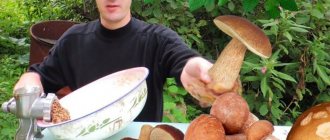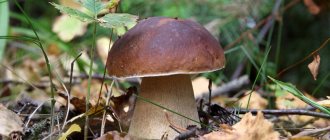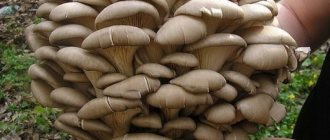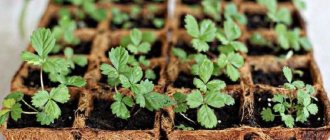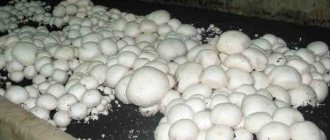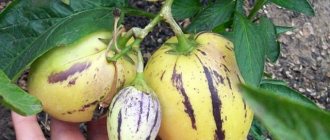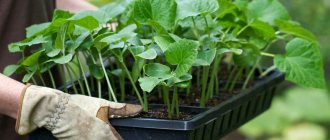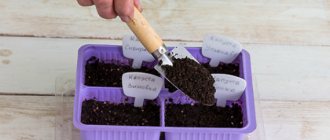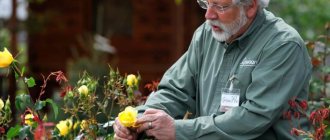Lovers of quiet hunting are accustomed to picking mushrooms among fir trees and birches, in forest clearings and sunny edges. But weather conditions are not always favorable for mushroom pickers, and sometimes they return home with half-empty baskets and a spoiled mood. How to grow mushrooms at home?
Connoisseurs and experts in growing mushrooms under artificial conditions suggest not wasting time and effort on fruitless searches, but rather start growing your favorite porcini mushrooms in your backyard or in a secluded corner of your apartment.
How to properly grow mushrooms at home step by step
At home, it’s good to practice not only boletus mushrooms. Work on growing champignons, oyster mushrooms, honey mushrooms, Japanese shiitake mushrooms, and chanterelles will be successful. First, you need to calculate the costs and decide what types of mushrooms you have the desire and ability to deal with.
If you grow mycelium (fungal spores) yourself, there is a risk of not being able to cope with this stage of the work. In order to obtain high-quality mycelium, absolutely sterile conditions must be created, and this is not always possible at home.
The solution is to use various ready-made combinations of dry grain or dung mycelium, which, after reading the instructions, is quite easy to work with.
In addition, it is necessary to prepare the soil substrate, decide which boxes or bags it will be in, how and in what rooms to place these containers.
Measures should be taken to create artificial optimal climatic conditions. When growing mushrooms in garden beds, concerns about light, temperature, humidity and air ventilation practically disappear, but the soil and wood structures, such as stumps for honey mushrooms, are still prepared in advance.
When growing mushrooms in rooms with windows, the glass must be whitened to prevent exposure to bright sunlight.
If there is absolutely no access to natural light in the room, then it is necessary to install fluorescent lamps that emit a red-blue spectrum corresponding to low street lighting. They are used in the daytime during the period when the fruiting bodies emerge from the substrate fungal block.
Mushroom growing technology for beginners
How to grow mushrooms at home. The technological process begins with the preparation of premises, soil substrate or compost.
Then they buy or grow their own mycelium, which is planted in the substrate.
The last stage is the process of cultivation itself, that is, growing mushrooms.
Features and Benefits
The mushroom business, like any other, has some disadvantages along with its advantages. Before you start growing mushrooms for sale, it is useful to familiarize yourself with all the pros and cons in order to decide whether this activity is right for you.
Benefits of growing mushrooms:
- the products are environmentally friendly and safe - you can provide your family with a valuable protein product;
- a great idea for a business - if you put mushroom cultivation on stream, you can make good money, since mushrooms are in stable market demand;
- there is no need to invent or invent anything - the technology is well thought out, you just need to follow the instructions;
- no expensive equipment or large start-up investments are required;
- Growing mushrooms can be done throughout the year - in the basement or at home.
Minuses:
- The harvest of mushrooms is influenced by various factors - problems with ventilation, lighting, temperature conditions;
- In order to quickly pay off the costs associated with opening a mushroom business, large-scale and diligent work is required, as well as reliable sales channels;
- when growing mushrooms on a mass scale, it is necessary to wear special clothing and protective equipment;
- if the farm is located in the basement, you have to spend a lot of time in an unfavorable environment;
- you need to find not only a room with a suitable area - if we are talking about growing mushrooms for sale, but also provide an appropriate microclimate there.
It is still unknown whether there is a harmful effect of fungal spores on the human respiratory system. Since there is no exact information on this matter, it is recommended to wear a respirator when working with mushrooms.
Growing champignons at home
Growing any mushrooms in an apartment can provoke asthma and other pulmonary diseases, because the spores are strong allergens and, when ripe, are spread throughout the room. In extreme cases, you can work with mushrooms on a loggia or balcony, but it is best in a separate building or basement.
The size of the harvest of champignons grown at home will depend on the air humidity in the room (up to 70%) and on the quality of the soil substrate .
It takes several weeks to prepare. Enclosed spaces are not used in this case, because poisoning may occur from the gases released during fermentation of the substrate components. The substrate is produced by composting straw and manure with the addition of fertilizers and soil deoxidizers.
Preparing compost for growing champignons (video)
Room for growing mushrooms
How to grow mushrooms at home. The ideal place for growing mushrooms should be a dirt-free, ventilated room with the ability to regulate humidity and temperature.
Professionals usually use not one, but two rooms - a chamber for the incubation period of the mycelium, and rooms where mushroom blocks are moved with the beginning of germination of fruiting bodies.
This is due to the fact that the initial stage should take place in the dark and at a temperature of +25°C.
And for the final stage, periodic illumination and a decrease in temperature to +16°C are required. Humidity should always be kept high and should not fall below 65%.
Improperly organized ventilation will lead to the accumulation of moisture and carbon dioxide near the places where mushrooms sprout. As a result, the fruiting bodies may die or, at best, become deformed.
Compost
In order to create a mycelium measuring 2.5-3 m², you need about 300 kg of a mixture consisting of 100 kg of dry straw, 2 kg of carbamide (urea), 2 kg of superphosphate, chalk and gypsum for a total of no more than 15 kg, and the rest must be manure, horse or cow.
The straw, pre-soaked for 24 hours, is laid out in layers, which are sprinkled with fertilizers, manure, chalk and gypsum. Each layer is additionally moistened, using at least 300 liters of water, and mixed. The mixture is turned over several more times and placed in a pile with a height of about 1.5 m and a width of 1.2 m. Fermentation of the components will begin inside it, releasing heat. The compost will be ready for use no earlier than three weeks later. During this period, it needs to be stirred once a week.
Planting mycelium
Mycelium for growing champignons is planted in compost heated to +26 °C. At a temperature lower than just two degrees, the survival rate of the mycelium sharply decreases; if it is higher, it will die.
The mycelium grown in manure is taken out of the jars and crushed into pieces weighing 15-20 g. They are planted in pre-made recesses or grooves 5 cm deep, staggered at a distance of 20 cm from each other. Gradually the mycelium will grow and fill the entire space.
The laid pieces of mycelium are covered with moistened compost on top and lightly compacted. Some mushroom growers, when planting mycelium, lift the compost with pegs and place planting material in the gap. The grain mycelium is mixed with the compost substrate, and compost without mycelium up to 5 cm thick is sprinkled on top.
The soil for growing mushrooms can be laid out on the floor of the room in the form of ridges, or on racks located one above the other. The gap between the floors of the racks is up to 30 cm, the width of the racks is up to 1.5 m.
Caring for a mushroom plantation
How to grow mushrooms at home. In the first 12 days after planting, the temperature of the mycelium should be the same as at the time of planting - from +24 to +26°C. At further stages of mushroom cultivation, the temperature should be maintained in the range of +18 to +20°C.
After checking the mycelium for survival, that is, for the appearance of long white threads or spots, loose turf soil mixed with peat or sandstone is poured onto its surface in a layer of 3-4 cm.
The room where mushrooms grow must be ventilated daily to remove accumulated carbon dioxide. Enter closed greenhouses before they are ventilated wearing masks or respirators.
Without the support of high air humidity and moderate compost, the mycelium will dry out and stop growing. Mushroom beds should also not be flooded to avoid the formation of mold, which can lead to the death of the mycelium.
Mushroom caviar from boiled mushrooms: the most delicious recipe
How can the used substrate be used?
Due to the fact that the substrate in the mushroom chambers has to be changed frequently, many people have questions about its disposal. Therefore, a few words need to be said about this as well.
Spent substrate from growing oyster mushrooms
So, as mentioned above, the substrate for mushrooms consists of natural components, which over the period of use have turned into excellent mulch or fertilizer. Therefore, the first way to put the substrate into action is to sprinkle it on the soil in the beds. This raw material is also good for filling strawberry rows. The substrate will retain moisture under the bushes, and the berries will not lie on wet soil and rot, that is, they will be dry when harvested.
The substrate is also perfect for mulching the soil for potatoes, due to which the growth and fruiting of the vegetable will be increased, since more oxygen will flow to its roots.
You should not worry that mushrooms will populate the entire garden, since without specially created conditions for them and if the mycelium is destroyed, they will not grow.
Oyster mushrooms growing from a block with spent substrate
Another area of application is laying blocks in a shady, damp place on the site. In the open air, oyster mushrooms will begin to “hatch” from the blocks, more similar to those that grow in forest conditions. Their hats will take on rich chocolate shades. Of course, there will not be too many of them, but quite enough for the family to prepare various dishes with mushrooms all summer.
You can offer the blocks to friends or neighbors who love mushrooms and would not mind having a small mycelium on their property.
Important! If there is still excess left, you should not throw it in the trash: it would be better to pour the substrate in the forest or in the field closest to your house, which will certainly benefit the environment.
From the information presented above, you can choose the one that is necessary for different cases, that is, to obtain a small amount of mushrooms in an apartment or cottage, and also if you decide to engage in mass cultivation of this useful and beloved product by many.
How to grow oyster mushrooms at home
Oyster mushrooms are naturally found on the trunks or rotten stumps of dried deciduous trees. Under artificial cultivation conditions, it is bred on a substrate of straw, reeds, sunflower husks, and sawdust. The substrate and mycelium of oyster mushrooms are alternately laid out in bags or bags in layers until the full capacity of the container.
Bags and packages with contents are pierced in several places with an awl at a distance of at least 20 cm from each other. Several punctures are made in the corners of the bottom of the bag to remove liquid.
Bags with mycelium are placed in a dark room with an air temperature of 18 to 25°C. After two weeks, the mycelium should grow, in which case the substrate should turn white.
The mycelium will ripen at this temperature for another week. Then the air needs to be cooled to 5°C. By this time, the first fruiting bodies of the mushrooms will begin to appear through the slits in the bags.
During this growing phase, dim lighting is turned on for 12 hours during the day.
Growing oyster mushrooms (video)
Preparation of substrate (compost): DIY preparation
Mushrooms require conditions close to natural, so specially prepared compost is needed, the composition of which must be loose and nutritious.
To grow maximum yield, prepare the substrate following the instructions. Since the strains or varieties of mushrooms are different, the preparation technology and the composition of the substrate may vary slightly. But there are general principles for preparing compost for growing mushrooms.
To prepare compost, combine the ingredients in the following proportions:
| First option | Second option |
|
|
It is acceptable to replace horse manure with bird or cow manure, but in this case the yield will be lower.
The following follows:
- The straw is soaked for 24 hours in warm water in a convenient container. Then they are placed in a stack, mixed with layers of manure (there should be 6-8 of them). Moisten each layer with warm water.
- After 3-4 days, mix the compost well and add urea and superphosphate.
- After another 3-4 days, mix the compost again, gradually adding the remaining minerals. At the last stirring, add gypsum.
On average, it takes 24-28 days to prepare compost. The fact that the substrate is ready is indicated by the disappearance of the ammonia smell and the acquisition of a light brown hue of manure. The finished substrate is moved to the basement and placed in containers where it is planned to grow champignons.
Experienced mushroom growers recommend using compost that is less picky and more resistant to disturbances in growing conditions for the first planting. The yield with compost mycelium is not as rich, but it is much easier to get the first experience with it. Before planting the mycelium, carefully examine the substrate: it should be slightly springy, not hard and not crumbly.
How to grow honey mushrooms at home
Honey mushroom is very popular among summer residents. They practice its cultivation on logs and stumps, in greenhouse conditions, and in basements.
At home, they are grown in jars. Banks are placed on balconies or window sills.
Before starting to work with honey mushroom mycelium, the jars must be sterilized. The substrate consists of sawdust from larch trees (three parts) and bran (one part). The mixture is poured with boiling water for one day, then allowed to cool and squeezed and compacted with hands wearing sterile gloves.
The substrate is placed at the bottom of the jar, keeping it clean and sterile, a depression is made and the mycelium is placed in it. Sprinkle the substrate on top, in a 3 cm layer. The jar, closed with a lid with holes, is taken out to a dark place. The air temperature should not fall below 22-25 °C. To maintain humidity inside the jar, cover it with damp gauze or cotton wool. Make sure that the cotton wool or gauze does not dry out.
The first honey mushrooms should appear in a month and a half. Mushrooms should no longer grow in the dark, but in a shaded place. To avoid interference with mushroom growth, remove the lid. Make sure that the mycelium does not dry out and periodically spray it with water.
How to pickle mushrooms for the winter in jars
Tea mushroom
Description
This organism is a so-called medusomycete - a symbiotic structure that includes yeast and acetic bacteria. The former are mushrooms without mycelium, so the name “kombucha”, although partially, justifies itself.
At home, kombuchas are kept in three-liter jars, less often in other containers. When grown industrially, the weight of this organism reaches several centners. From a zoological point of view, kombucha is a film of these microorganisms located on the surface of the water and consisting of several layers.
Kombucha in a jar
The growth of the fungus occurs when it is fed with sugar. Yeast ferments this sugar, breaking it down into less complex components: ethanol and carbon dioxide. Bacteria convert some of the ethanol into vinegar, and the resulting substances are used to form new generations of yeast and acetic acid bacteria. The organism grows from the bottom layer, the topmost is the oldest. The layers located between them are where sugar is converted.
Growing New Kombucha
You need to start with the future habitat of the organism.
For this we need the following components:
- 3 liter glass jar
- gauze or bandage
- fungal membrane
- high concentration tea solution
- granulated sugar
First, the jar is washed and steamed to sterilize. At the same time, strong tea is prepared.
The concentration of tea must be high, so the following composition is recommended:
- 2 heaped teaspoons of tea
- 5 tablespoons sugar
- 1 liter of boiling water
It is best to brew tea from boiled, cooled and brought to a boil again. This is necessary to increase its softness and ensure that it gets rid of microorganisms.
Be sure to remember that pouring sugar directly onto the mushroom is strictly prohibited!
The tea is poured into a three-liter jar and cooled to room temperature. At the same time, there should be no tea leaves or undissolved pieces of sugar in it. After this, a mushroom membrane is placed in the jar and the neck of the jar is closed with gauze or a bandage. Sometimes it is recommended to add 2-3 teaspoons of mother tea solution along with the membrane.
Adding mushroom membrane to tea
The jar is placed in a warm place, protected from direct sunlight and drafts. Recommended temperature range: from +22°C to +25°C. After about 1-2 weeks, the mushroom will have grown enough and will be ready to produce the drink.
Sometimes during this period the mushroom will settle to the bottom; this is normal, since the first few days there is not enough carbon dioxide in the mushroom to hold it on the surface.
Care
The care technique is simple:
- Once every 15-20 days, the mushroom needs periodic washing.
- And once every 2-6 days you need to drain the liquid from it, adding tea to the jar (the recipe for which was given earlier) to the required level.
- The frequency of fluid renewal depends on the air temperature; the higher it is, the faster the fluid is renewed.
- When the bottom layer is separated from the mushroom, it can be replanted.
In an old mushroom, this layer appears again within 5-10 days. The top crust must be removed as it becomes coarser. Once every two months, the mushroom should be washed especially thoroughly, completely changing the liquid in the jar, sterilizing it.
In this case, the upper and lower layers of the mushroom are removed.
Growing shiitake mushrooms at home
How to grow mushrooms at home. For shiitake mushrooms, fresh stumps 1.5 m long of oak, chestnut, and beech are used. On stumps, the bark should be intact, the wood under the bark should be moist. To maintain humidity, the shiitake growing area should be in the shade. Seeding with mycelium can continue until the wood dries out, 1 to 3 months.
The mycelium mixed with the substrate is pushed into holes drilled with a drill pre-treated with alcohol. Then the holes are closed with wooden pegs, like corks, and sealed with paraffin. The stumps with embedded mycelium are tightly connected to each other in the form of a standing woodpile. Cover the woodpile with film. Store at 20-26 °C, if conditions allow, outdoors in the shade, or indoors. The development of the mycelium lasts from half a year to 18 months.
After the mycelium grows, the stumps are shed abundantly and for a long time with water. Fruiting on the same stumps can occur several times.
Growing shiitake mushrooms on stumps (video)
Growing shiitake in the basement (photo)
From a business point of view
Let's try to evaluate a business based on growing mushrooms. For this purpose, we will use the data of an average estimate of the cost of raw materials and finished products using the example of oyster mushrooms. Oyster mushrooms are the cheapest mushrooms, so their profit per unit of mass sold will be minimal; for other mushrooms (for example, champignons) it will be slightly higher.
Farm for growing oyster mushrooms in several tiers
Let's evaluate the income part. The yield of oyster mushroom is on average 30% of the mass of the substrate with mycelium. The substrate is capable of producing two harvests before losing its effectiveness. Consequently, up to 600 kg of oyster mushrooms can be collected from one ton of substrate. The average price of these mushrooms is:
- wholesale sales – from 1 to 1.5 dollars per kilogram
- retail sales – from 1.7 to 2.5 dollars/kg
Even in the most minimal scenario, with wholesale sales of goods from one ton of substrate, a gross profit of $600/t is obtained.
Now the costs:
- The average cost of a ton of substrate for growing oyster mushrooms is about $50/t
- The amount of mycelium per ton of substrate can be several kilograms
- Its cost will be approximately $25/t
Additional costs must also be taken into account in the cost of mushrooms. They can be either related to production (humidification, fertilizers, lighting, etc.) or overhead (transport, advertising, other contract-forming expenses). If we make an average estimate, then about $40/t can be allocated for the former, and $25/t for the latter.
Thus, the total cost of growing mushrooms from one ton of substrate is about 130-140 dollars. Taking into account taxation and possible costs to personnel, we find that the net profit from oyster mushrooms is about 250-270 dollars per ton.
To generate income from oyster mushrooms of $1,000 or more, the business should start with at least four tons of substrate. On average, one bag of substrate weighing 10 kg requires 1.2 m in height and about 0.35 sq.m of area to be placed. Four tons of substrate will require an area of about 125 sq.m. for its placement.
It is best to place bags of substrate in several levels. If the room is of sufficient height, their number can be three; in ordinary, so to speak, home conditions, two levels are usually used. Thus, the profitability of oyster mushrooms per unit area is $4 per square meter. meter with two-tier arrangement of bags with substrate and 6 dollars/sq. m. with three tiers.
Similar costs for champignons give figures of about $350 per ton of substrate.
The high profitability of mushroom farms makes them very attractive for private businesses. But that’s not all: in countries with problems with food production or with a poor range of products, mushroom cultivation is the main source of protein products for the market.
Oyster mushroom farm in North Korea
Anyone can start a mushroom business. The main thing is to agree in advance on the channels for selling finished products, or to engage in this sale yourself. As in any business, there are small nuances here: for example, in the spring (during Lent) the consumption of mushrooms increases, and their prices rise slightly, and so on.
How to grow porcini mushroom near your home
Mushroom pickers often pick overripe porcini mushrooms in the forest. Some people make their own liquid seed spore material from these mushrooms, and then water the ground with it in secluded places in their garden plot with suitable soil.
Mushrooms are chopped either using a knife or passing through a meat grinder. Mushroom mince is placed at the bottom of a trimmed 5-liter plastic bottle and filled with 4 liters of spring water at room temperature. Add 50 g of live baker's yeast, cover loosely with several layers of gauze and leave for 2 weeks in a warm, unlit place. 100 g of the resulting mixture is diluted with 2 liters of settled water and poured over the area. If the soil is not suitable, then it is prepared, bringing the composition as close as possible to the soil where the mushrooms were picked.
The first signs of mycelium growth will appear in a few months, and the first mushrooms will appear in a year and a half.
How to grow porcini mushrooms in your garden (video)
What diseases and pests can cause harm?
Basic disinfection of the premises using smoke bombs, spraying and liming will help fight pests and diseases. But occasionally there are situations when mushrooms are exposed to various diseases and pests. The most common ones include:
| Name | Causes | Fighting methods |
| Fungus mite | A small yellow parasite that eats the stems of mushrooms. | Eliminate the problem by spraying mushrooms and compost with a 0.1% metaphos solution. |
| Mummies | A disease that occurs due to lack of light. The mushroom caps become dark gray and the flesh turns brown. | Remove the infected mycelium along with the substrate. |
| Mushroom midge | Fly larvae that end up in the compost along with manure. Over time, the mycelium becomes affected, which can lead to the cessation of fruiting and death. | The compost is treated with 0.5% chlorophos. |
| Rotting mushrooms | The development of the disease occurs with direct penetration of moisture into the already formed mycelium. This leads to immediate infection of other fungi. | Damaged myceliums are removed, those that remain are treated with a formaldehyde solution with a concentration of 0.2%. |
| Mold | Wet brown spots form on the surface of the mushrooms and increase in size. | Diseased mushrooms are removed, the substrate is sprinkled with superphosphate and table salt. |
How to grow chanterelles
The difference between growing chanterelles and porcini mushrooms near the house is that the spores are not shed on any areas with prepared soil, but only on areas near the same tree near which the mushroom was found.
If you use purchased mycelium, you can try to plant it under coniferous, fruit trees and shrubs, even in raspberries.
The main thing is that the trees are at least 5 years old. The myceliums of chanterelles do not freeze, but they still need to be covered with fallen leaves or straw. Mushrooms are planted from early spring until late autumn.
Cucumbers on the balcony: growing in plastic bottles
What are mushrooms planted in?
If growing indoors, it is important to plant the mushrooms correctly. It is better to use containers made of durable materials. Most often attention is paid to plastic.
It is important to find an option without toxic contents. Containers made from natural materials are susceptible to infection by various microorganisms. Therefore, it is better not to use them.
Growing mushrooms in plastic bags
When growing mushrooms using bag-bag technology, the problem of the spread of diseases and molds is eliminated, because there is a barrier made of propylene or polyethylene between the mushrooms. The mushrooms additionally receive carbon dioxide, which is well retained by the film, and the soil substrate is easier to maintain moist.
Polymer containers are much cheaper than containers, easy to use and easy to recycle. The transparency of the film allows you to observe the development of the mycelium. The shape of the bags can be cylindrical or cubic, which allows them to be placed in a way that is convenient for the manufacturer and saves space in the room reserved for mushroom propagation.
Truffle cultivation
Given the high cost of mushrooms, attempts have long been made to grow them artificially. The so-called Australian method is considered the most successful. It requires quite a large area and is quite expensive, however, due to the high cost of truffles, it is completely justified.
Truffles after the first year of cultivation
Truffles are grown in large areas, 1 hectare or more, and the number of plants infected with truffle mycorrhiza can reach up to 500. In just a year, the truffle harvest will be about 4 kg per hectare, and after 5-6 years it will be about 20 kg per hectare.
Preparation for cultivation
It is best to infect oak or hazel seedlings with mycorrhiza. It is the seedlings that need to be used, and not young (and especially not old) plants. In order for mycorrhiza to form without problems, the seedlings are kept in greenhouse conditions for some time.
Some breeders even recommend quarantining the seedlings for 40-60 days, even with air insulation.
When the seedlings reach a length of up to 20 cm, it is believed that the mycorrhiza has formed enough to tolerate transplantation. The soil where young trees with mycorrhiza will be transplanted should be neutral or slightly acidic. It must be fertile and must contain calcium compounds.
Truffle farm in the field
The soil is carefully dug up and processed before planting. No fertilizers are applied to avoid the death of mycorrhizae. Given the large growing areas, seedlings are planted at intervals of 4x5 or 5x5 meters.
Such distances are due to the fact that the overgrown mycorrhiza of one truffle already after a year occupies an area of about 20 square meters. m. Planting is best done in the spring, when there is no threat of frost. There should be no coniferous trees, poplars or willows nearby. The planting depth of young infected plants is up to 75 cm.
Care
900 gram white truffle
Each seedling is mulched with a diameter of 40-50 cm and covered with plastic film. During the first two years, it is necessary to remove weeds around all planted plants.
Fertilizing is carried out with a small amount of complex fertilizer containing nitrogen, phosphorus and potassium. Frequency – 2 times a year, at the end of autumn and beginning of spring.
The site should be protected from rabbits and pigs, which are capable of finding and destroying the entire crop on the site in less than a couple of days. You should remove any other mushrooms from the area and ensure that there is no infestation of weevils or cockroaches. In case of insect attacks, it is recommended to use insecticides.
Harvesting
When the spores in a truffle mature, it is ready to be harvested
Typically, tubers are located at a depth of about 20-30 cm from the surface level. An indicator that there are mushrooms is the presence of truffle flies in the area.
When digging a truffle from the ground, you can use ordinary garden spatulas for small plants.
Growing mushrooms in the basement
How to grow mushrooms at home. In the absence of special above-ground premises, mushroom lovers grow them in basements, where they create optimal conditions so as not to lose the harvest.
The main advantage of such places for growing mushrooms is that when using them, the material costs of maintaining low temperatures are reduced, and the humidity in them is usually high. But most likely it will be necessary to carry out work related to ventilation of the basement. The cultivation technology is not much different from the processes in ground-based premises.
Amateurs and professionals who grow mushrooms, despite great efforts, still receive material benefits from their work. The main thing is to observe all the necessary conditions and cleanliness so that instead of mushrooms you do not end up with dried mycelium.
Arrangement of the mushroom chamber
If you plan to grow mushrooms commercially, you will have to install a mushroom chamber in the basement or other relatively warm place. It must be equipped with the equipment necessary to create favorable conditions.
Example of equipment for a mushroom chamber in a basement or garage
- Thermal insulation . Foamed foil polyethylene, which is used to cover the walls and ceiling, is well suited for insulation and heat reflection. This material will help save on heating costs.
- Heating the room . This process can be carried out in any of the available ways - a stove, heating devices, or carrying out general heating in the basement.
- Hydration . The air in the chamber must have high humidity. To achieve this, different devices are used - these can be household or special ones designed for mushroom chambers, air humidifiers or an evaporation system coming from the oven.
- Ventilation. The room should have good ventilation, since during the growth period any mushrooms need air flow. Therefore, an exhaust fan should be built into the natural ventilation system to promote the circulation of air masses.
Perforation, in other words, cutting bags with sprouted mycelium - Lighting. The mushroom chamber must be equipped with lamps with diffused light. During the period of mycelium germination, the light in the room is not turned on. When the substrate is overgrown with the root network of the mycelium, the light is turned on only to perforate the blocks. When the first mushrooms appear, the lighting in the chamber is turned on for 3-5 hours a day.
Sprinkling champignons - Watering . Mushrooms grown in blocks (plastic bags) do not need watering, since they have enough moisture, which they take from the initially moistened substrate. A small amount of the product, which is planted in open containers, is sprayed with a spray bottle or sprinkled with a hose through a sprinkler. Water for irrigation should not be cold; the optimal temperature is at least 18-25 degrees.
- Shelving . To contain blocks or boxes in the mushroom chamber, racks with shelves are installed. It is recommended to make them from metal, treating it with anti-corrosion compounds, since wood will quickly collapse under the influence of moisture and fungal germination processes.
More details about the planting and maintenance of different types of product will be discussed in the following sections.
Reviews
Grigory 45 years old, Rostov
I really liked the method of growing porcini mushrooms and chanterelles on my plot. It’s not particularly clear through which attachment the mushrooms are rolled into the meat grinder, probably with large holes. I will definitely collect forest soil and water it with mushroom spores.
Stepan 50 years old, St. Petersburg
When growing mushrooms on stumps or logs, do not forget about snails; they destroy the mycelium before you know it.
Elena 43 years old, Volgograd
I would like to clarify that growing oyster mushrooms on sunflower husks is quite an interesting option. When buying mushrooms at the market, I saw that the husks were stuck to them. And the mushrooms tasted very good.
Natalya 32 years old, Chelyabinsk
Be sure to try planting mushrooms in a flower pot or bucket at home! The result will please you!
Is it possible to build a business on a mushroom farm?
There is quite a lot of competition in the mushroom market - their cultivation has already been put into production, so you can’t count on big profits. And most importantly, before starting a business, you need to make sure that there are markets.
What you need to open a champignon farm
When starting a business, be sure to analyze the local market in terms of supply and demand. Find out more about future competitors and business risks, master growing technology.
What you will need to start a business:
- Room. Its area should correspond to the scale of production, and its features should correspond to the conditions for growing specific mushrooms. From an area of 100 sq. m harvest 2-4 tons.
- Permission. It is recommended to register as an individual entrepreneur.
To do this, you need to submit an application to open production and pay a state fee. Enter OKVED code 0 1.13.6 “Cultivation of truffles and mushrooms.” To obtain permission, you must submit documents on radiological control, a phytosanitary certificate, certificates of compliance with GOSTs and relevant instructions. - Equipment. To grow mushrooms for sale, you will need an air conditioner, a thermohydrometer, lamps, scales, a steam generator, a boiler for heating water, and a refrigerator. You will also need boxes, shelves, pallets - depending on the chosen growing method.
- Staff. For a small business you will need 3-4 people. They will plant mushrooms, care for the harvest, collect products, process the premises, and maintain optimal conditions.
You can increase the area due to tiers - mushrooms can be grown on several floors. It is also necessary to organize an irrigation system - automatic or manual.
Where to sell finished products?
A prerequisite for the success of a mushroom business is reliable markets. Mushrooms grow constantly, they cannot be stored for a long time, so you need to have several points of sale - to be on the safe side. You can also organize your own point of sale at the market, equipping it with a large refrigerator.
Where can you sell finished products:
- to grocery stores;
- to supermarkets;
- to processing plants;
- resellers;
- to cafes and restaurants.
Experts assure that to start a mushroom business you need at least 700,000 rubles. The money will mainly be used to purchase equipment for growing mushrooms and maintaining the microclimate.
Current expenses per month - 70,000 rubles. The money goes to pay rent, water, electricity, taxes, and salaries to employees. The first mushrooms will be collected only 2 months after the start of the business, so in general, about 1 million rubles will be required to start the business.
1 kg of mushrooms (champignons) retails for about 250 rubles. Wholesale price - 150 rubles. Per 100 sq. m you can collect 2000 kg per month. One mycelium produces 6 harvests. Total per year - 1,800,000 rubles. Profit for the month - 150,000 rubles. Profitability - 25-40%. The business pays for itself in a year or more.
The mushroom business is not without risks:
- Mushrooms may not sprout or die. Such a disaster often happens to novice entrepreneurs who, without sufficient experience, immediately organize large plantations.
- You may be left without a harvest due to diseases or pests. Strict adherence to technology, regular ventilation and cleaning helps to minimize risks.
- It is not always possible to find buyers. Selling the entire harvest is problematic.
Growing mushrooms is an interesting and promising activity that can become a hobby, a business, or just a help in the household. It all depends on the scale and interest of the person who decides to grow mushrooms for the family or for sale. This business does not bring any special profits today, but with proper organization it can easily become a stable source of income.
0
0
Copy link
Growing champignons as a business idea (video)
All edible mushrooms have unique aromatic and taste properties. They contain a huge amount of nutrients, fiber and vegetable proteins. Mushroom dishes are irreplaceable for anyone who follows a healthy diet or fasts. Therefore, the topic of growing mushrooms at home is more relevant than ever. Nothing is impossible! Try it, and you will definitely succeed!
Health to you and your loved ones! Natalya Belokopytova
What kind of mycelium is needed?
Mycelium is also called mycelium. It is the vegetative body of fungi - a system of thin branching threads or hyphae.
The mycelium performs important functions, therefore without it the process of growing mushrooms will not take place:
- participates in sporulation and is responsible for preserving the formed spores;
- helps organisms attach to nutrient substrates;
- adapts well to the environment;
- With the help of enzymes, it processes cellulose, obtaining from it substances available for growth and development.
Mycelium is an important organ responsible for the vegetative reproduction of organisms.
Purchasing a finished product
To grow champignons at home, it is recommended to use grain mycelium , since it is not only convenient to sow, but it does not require additional processing. When purchasing mycelium, pay attention to its appearance: the grains should be yellow with a slight orange tint.
It is not recommended to purchase mycelium with dark spots - this is evidence that mold is present. The quality of planting material is also determined by smell: there should be a clearly defined aroma of fresh mushrooms. If you notice an ammonia odor, the product was not stored properly and is spoiled.
Be sure to pay attention to the manufacturer's company. It is advisable to choose mycelium from a well-known and large supplier. You shouldn’t buy a lot of mycelium at once; it’s better to sample it first. If there are no problems with germination, the formation of mycelium will be good, then purchase a large batch.
Growing mycelium yourself
Before planting mushrooms, many gardeners and gardeners grow mycelium themselves, citing the fact that this way they will be able to obtain a high-quality product. Mycelium grown at home can be used as compost or grain.
The preparation of grain mycelium occurs according to the following scheme:
- Pour 10 kg of grains into a container, add 15 liters of water.
- Place on low heat, bring to a boil and simmer for half an hour to an hour. The grains should not be boiled, but should be soft.
- Drain the water, dry the grain, and then pour the finished material into liter jars. Make holes in the lids and beans.
- Seal the holes in the lids with cotton swabs. Place the jars in an autoclave with a pressure of 1.5 atm. for 30 minutes.
- Place the mycelium in the cooled grain, or rather in its holes.
- Place the jars in a thermostat with a temperature of 24 degrees, do not remove them until the mycelium completely occupies the entire nutrient medium.
To obtain compost mycelium, the following procedures are performed:
- Take 3-liter jars and fill them 2/3 with champignon substrate. Compact well.
- Roll up the jars with lids, making 3-centimeter holes in them, covering them with cotton swabs.
- Heat the compost to 24 degrees, place the mycelium in it.
- Tightly sealing the holes in the lids will help prevent infection of the mycelium.
boletus
Mycorrhizae are best formed with birch, aspen, and pine. They need to be grown from purchased mycelium or mycelium brought from the forest. The beds should be made in a well-lit area, the trees should be chosen young. The mycelium should be buried no more than 5-8 cm. Autumn planting is preferable. Watering from spring to autumn - 2 times a week. Boletus flowers bear fruit from June to October.
- Author: iarriba
Rate this article:
- 5
- 4
- 3
- 2
- 1
(3 votes, average: 2.3 out of 5)
Share with your friends!
